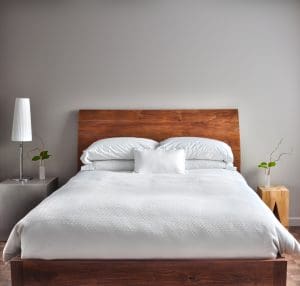 The typical 8-5 job often results in a sedentary lifestyle, which commonly leads to lower back pain later in life. Try the tips below to help alleviate back pain, or prevent it before it strikes!
The typical 8-5 job often results in a sedentary lifestyle, which commonly leads to lower back pain later in life. Try the tips below to help alleviate back pain, or prevent it before it strikes!
It hurts to stand. It hurts to sit. It hurts to lie in bed. Welcome to the pain-in-the-you-know-what pleasures of lower-back pain. Four out of five people endure lower-back pain at some point in their lives. It can hang around for a few days—or months and years. Fun times.
Exercise mishaps, muscle strains, postural changes during pregnancy, and bulging or herniated discs (which, when they haven’t run amok, cushion the spine’s vertebrae) are all common culprits. But, most people never treat their pain’s underlying causes or even look into what those causes might be. Instead, they just push through it—perhaps with a few complaints and bottles of pain meds.
Nonsense! With some simple exercises and lifestyle switches, most cases of lower-back pain improve within just a few weeks. (If the pain doesn’t go away or comes with “red flags” such as unexplained weight loss, fever, or severe immobility, talk to your doctor. While they aren’t primary causes of lower-back pain, infections and tumors can lead to pain.) Here’s your four-step plan:
 1. Move more.
1. Move more.
Increasing general physical activity has been recommended for both acute and chronic low-back pain. For instance, recent research from Tel Aviv University in Israel found that both walking and strength-training programs reduce chronic lower-back pain after six weeks. Yoga may also provide some relief.
2. Work your inner abs.
Don’t just train your outermost “six-pack” ab muscles. You also need to strengthen your transversus abdominis, which is deep in your core and helps keep your spine stable. Lie on your back with your knees bent and feet shoulder-width apart. Exhale and reach your hands toward the ceiling as if you’re trying to grab a trapeze bar overhead, raising your head and shoulders. Hold for one to two seconds, then inhale while lowering your shoulders back to the floor. That’s one rep. Complete three sets of ten, three to five days a week.
 3. Spring for a new mattress.
3. Spring for a new mattress.
Sleeping on the wrong mattress—whether it’s too hard, too soft, or just worn down—can cause and worsen lower-back pain by throwing off the spine’s alignment and straining muscles. According to the National Sleep Foundation, a quality mattress lasts for nine to ten years, but if you don’t sleep well, you may need to replace yours before then. People who switch out their mattresses after five years sleep significantly better and have less back pain than those who wait longer, according to research from Oklahoma State University. Opt for a medium-firm mattress. In one Kovacs Foundation study, patients who slept on medium-firm mattresses had less in-bed and daytime lower-back pain than those who slept on firm ones.
4. Stretch out sciatica.
Tightness in the piriformis muscle—which runs from the back of the thighbone to the base of the spine—has been linked to pain, weakness, numbness, and tingling in the leg (aka sciatica). To stretch it out, lie on your back with both knees bent and cross the calf of the in-pain leg across the other’s thigh. Wrap your hands around the back of your leg and pull toward your chest until you feel a stretch in your butt. Hold for 30 seconds. Complete six to eight reps, three to five days a week.
This article was posted on FitnessMagazine.com








